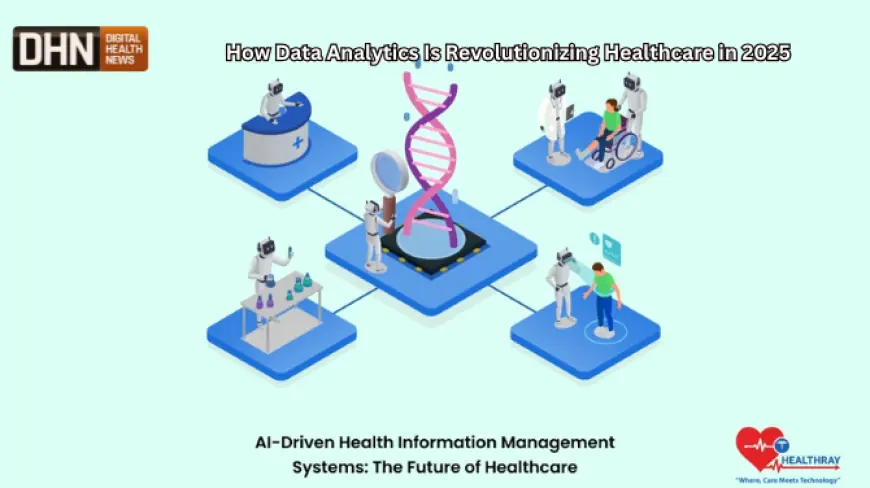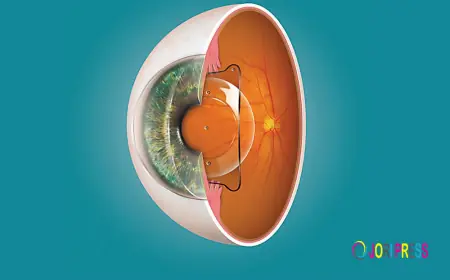How Data Analytics Is Revolutionizing Healthcare in 2025
How Data Analytics Is Revolutionizing Healthcare in 2025

In 2025, the healthcare industry is undergoing a radical transformation, and Data Analytics is at the forefront of this revolution. From improving patient outcomes and reducing operational costs to predicting disease outbreaks and personalizing treatments, data analytics is playing a pivotal role in reshaping healthcare systems around the world.
In this article, we explore how data analytics is revolutionizing healthcare, the key benefits, real-world use cases, and future trends—all while maintaining a strong focus on the keyword Data Analytics to support SEO and readability.
What Is Data Analytics in Healthcare?
Data Analytics in healthcare refers to the process of collecting, analyzing, and interpreting large volumes of health-related data to make informed decisions. This data includes patient medical records, diagnostic information, wearable device outputs, insurance claims, and even social determinants of health.
By using data analytics, healthcare providers and institutions can uncover hidden patterns, forecast trends, and make data-driven decisions to improve care delivery.
Why Data Analytics Matters in Healthcare
The healthcare sector generates vast amounts of data every day—from clinical records and lab results to imaging, prescriptions, and wearable health tech. However, until recently, much of this data remained underutilized due to poor integration and analysis capabilities.
Data Analytics provides the tools and techniques needed to harness this data effectively. When implemented properly, it improves clinical decision-making, streamlines operations, enhances patient experiences, and reduces waste.
1. Enhancing Patient Outcomes with Predictive Analytics
One of the most promising applications of data analytics in healthcare is predictive analytics. By analyzing historical patient data, health systems can identify at-risk individuals before symptoms worsen.
For example, hospitals are using data models to predict readmission risks, enabling earlier interventions and better discharge planning. Chronic disease management programs also leverage predictive analytics to track patient progress and anticipate complications.
This proactive approach not only improves health outcomes but also saves lives and reduces healthcare costs.
2. Personalizing Treatment Plans with Precision Medicine
Precision medicine is a game-changer, and data analytics is its backbone. By combining genetic, clinical, and lifestyle data, clinicians can tailor treatment plans to each patient’s unique profile.
For instance, cancer treatments can now be customized based on a patient’s genetic makeup, increasing effectiveness and reducing adverse reactions. This personalized approach represents a shift from “one-size-fits-all” to “individual-first” medicine—made possible by big data and advanced analytics.
3. Streamlining Hospital Operations
Hospitals face numerous challenges, including staff shortages, long wait times, and administrative inefficiencies. Data Analytics helps address these issues by optimizing operations.
Using real-time dashboards and predictive tools, hospital administrators can forecast patient admissions, improve bed utilization, manage staffing needs, and reduce emergency department crowding.
In 2025, many healthcare institutions are adopting operational analytics to run more efficiently while improving the overall patient experience.
4. Improving Population Health Management
Population health management focuses on improving health outcomes across communities and groups. With data analytics, healthcare organizations can track public health trends, monitor disease outbreaks, and develop targeted interventions.
For example, during the COVID-19 pandemic, data analytics played a crucial role in tracking infection rates, vaccination progress, and public health responses. In 2025, health departments use analytics to address chronic diseases, mental health challenges, and health disparities at scale.
5. Reducing Healthcare Costs
The rising cost of healthcare is a global concern. Fortunately, data analytics helps reduce unnecessary expenditures by:
-
Minimizing redundant testing
-
Improving care coordination
-
Reducing hospital readmissions
-
Enhancing supply chain management
Health insurers also use analytics to detect fraud, optimize coverage plans, and incentivize healthier behaviors among members.
6. Enhancing Clinical Decision Support Systems (CDSS)
Clinical Decision Support Systems (CDSS) are tools that help doctors make informed choices by analyzing patient data and providing evidence-based recommendations. In 2025, CDSS powered by data analytics deliver real-time alerts, flag medication errors, and support diagnosis and treatment decisions.
By reducing the risk of human error and providing second-opinion intelligence, these systems improve both safety and clinical outcomes.
7. Empowering Patients Through Data
With the rise of wearable devices, health apps, and patient portals, individuals now have more control over their health data than ever before. Data analytics transforms this raw information into meaningful insights, allowing patients to track their health, adhere to medication plans, and make informed lifestyle choices.
Empowered patients are more engaged in their care, which leads to better outcomes and increased satisfaction.
Real-World Examples of Data Analytics in Action
Mayo Clinic
Mayo Clinic uses predictive analytics to assess patients’ likelihood of developing serious complications after surgery. This has improved pre-operative planning and reduced mortality rates.
Mount Sinai Health System
Mount Sinai leverages machine learning to predict patient deterioration in ICUs, enabling early intervention and improving survival rates.
Kaiser Permanente
Kaiser uses population health analytics to identify high-risk patients, coordinate care more effectively, and lower hospital admission rates.
Challenges to Overcome
Despite its potential, data analytics in healthcare faces several challenges:
-
Data Privacy and Security: Handling sensitive patient data requires robust cybersecurity measures and compliance with regulations like HIPAA.
-
Data Silos: Many healthcare systems operate in silos, making data integration difficult.
-
Interoperability: Standardizing data across multiple platforms is essential for effective analytics.
-
Skill Gaps: There’s a growing need for skilled data scientists, analysts, and engineers in the healthcare industry.
Addressing these challenges is critical for maximizing the benefits of data analytics in healthcare.
The Future of Data Analytics in Healthcare
The future of data analytics in healthcare looks incredibly promising. As technology evolves, we can expect:
-
AI-Powered Diagnostics: Faster and more accurate diagnoses using deep learning and image analysis.
-
Real-Time Decision Making: Instant insights at the point of care via integrated analytics dashboards.
-
Predictive Wellness: Identifying health risks long before symptoms appear.
-
Decentralized Data Ecosystems: Leveraging blockchain and cloud technologies to create secure, interoperable data networks.
By 2030, data analytics will be deeply embedded into every aspect of healthcare—from bedside care to back-office operations.
Final Thoughts
In 2025, Data Analytics is no longer optional—it’s a fundamental pillar of modern healthcare. From enhancing clinical decisions and optimizing operations to empowering patients and improving outcomes, data analytics is truly revolutionizing the healthcare landscape.
Healthcare organizations that embrace data-driven strategies will not only deliver better patient care but also position themselves for long-term success in an increasingly competitive and tech-driven world.
What's Your Reaction?
 Like
0
Like
0
 Dislike
0
Dislike
0
 Love
0
Love
0
 Funny
0
Funny
0
 Angry
0
Angry
0
 Sad
0
Sad
0
 Wow
0
Wow
0


















































